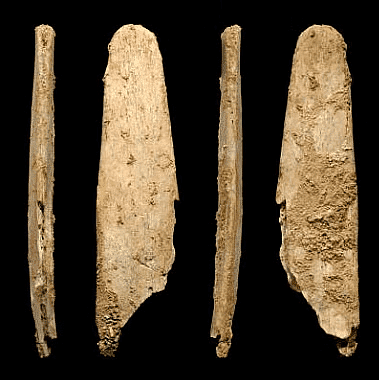Our Ancestors - 2 Class 3 Worksheet SST
 Q1: Fill in the blanks.
Q1: Fill in the blanks.
(i) Earliest humans are also called __________.
Ans: Earliest humans are also called hominids.
(ii) Early humans appeared about ________ years ago.
Ans: Early humans appeared about 40,000 years ago.
(iii) Early humans were afraid of ________ and ________.
Ans: Early humans were afraid of thunder and lightning.
(iv) The Potter's wheel was used for making _______ pots.
Ans: The Potter's wheel was used for making earthen pots.
(v) Early humans found that ________ protected them from the cold as well as wild animals.
Ans: Early humans found that fire protected them from the cold as well as wild animals.
Q2: Write true or false.
(i) Early humans lived at one place at a time and did not move for anything.
Ans: False
(ii) Wheel is one of the greatest inventions of mankind.
Ans: True
(iii) Early humans became food gatherer from food producer.
Ans: False
(iv) Early humans used tools made of stones and bones.
Ans: True
(v) The early humans appeared about 40,000 years ago.
Ans: True

Q3: Answer the following questions briefly
(i) Name any two sources of our knowledge about early humans.
Ans: Two sources of our knowledge about early humans are cave paintings and remains of Shelters.
(ii) What did early humans notice floating on water?
Ans: The early humans noticed logs of wood floating on water.
(iii) Where did early humans store their food?
Ans: The early humans stored their food in baskets and wooden casks.
(iv) How did early humans roast the flesh of animals?
Ans: The early humans roasted animal flesh by placing it on fire.
(v) How did early humans get the idea of making rafts?
Ans: It is believed that the early humans got the idea of making rafts when they saw logs of wood floating on water.

Q4: Answer the following questions.
(i) What is an archaeological excavation ?
Ans: Archaeological excavation is the process of digging a particular area to find out the remains of historical relevance.
(ii) How did the invention of wheel help the early humans?
Ans: Invention of wheel brought about major changes in the life of early humans travelling on roads became easier and faster. With the invention of Potter's wheel they began to make pots to store Grains. This lead to advance in Constructions, organised settlements etc.
(iii) How did early humans make use of Fire?
Ans: The discovery of fire was one of the most important events in human life. Early humans used Fire to roast food, bake earthen pots, ward off wild animals and to protect themselves against cold.
(iv) What did early humans wear as clothes?
Ans: The early humans used leaves an animal skin to cover themselves against heat and cold.
(v) What do cave paintings tell us?
Ans: Early humans liked to express themselves through drawings of animals and hunting scenes on the walls of caves where they lived. These cave paintings give us an insight into their life.
FAQs on Our Ancestors - 2 Class 3 Worksheet SST
| 1. What is the importance of studying our ancestors? |  |
| 2. How can studying our ancestors benefit us in the present? |  |
| 3. What are some common methods used to study our ancestors? |  |
| 4. How can studying our ancestors contribute to medical research? |  |
| 5. Are there any challenges or limitations in studying our ancestors? |  |





















